

LWCC Liquid Waveguide Capillary Cell
Liquid Waveguide Capillary Cells
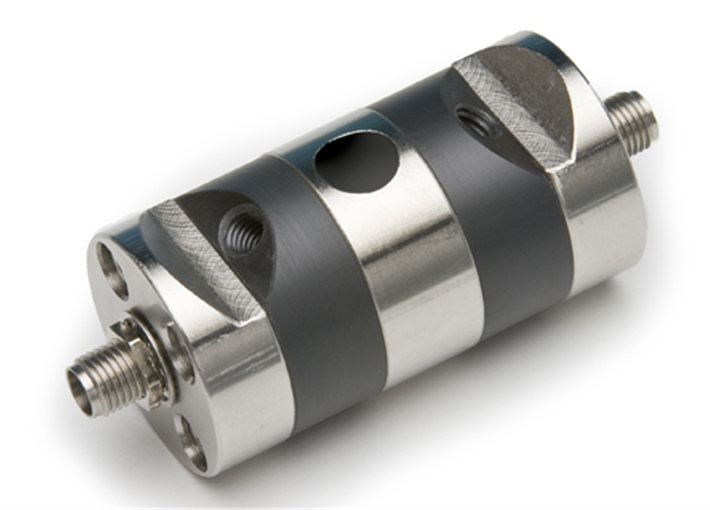
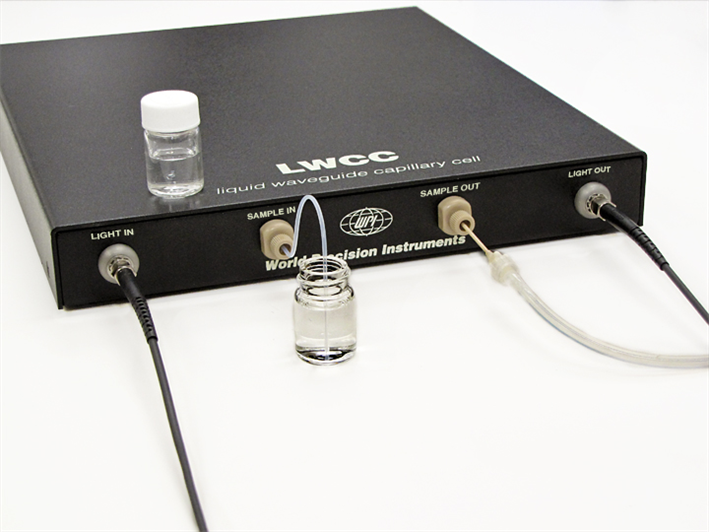
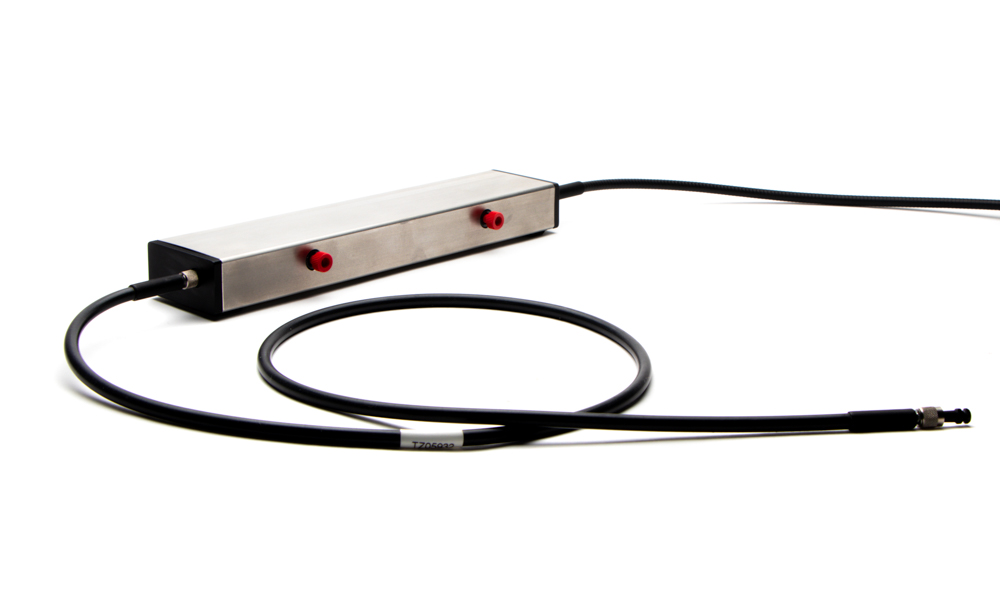
Used for absorbance measurement, Liquid Waveguide Capillary Cells (LWCC) are optical sample cells that combine an increased optical pathlength (1–500 cm) with small sample volumes (0.024–1.6 mL) for ultraviolet (UV) and visible (VIS) absorbance spectroscopy. They can be connected via optical fibers to a spectrophotometer with fiber optic capabilities. Light is confined within the (liquid) core of an LWCC by total internal reflection at the core/wall interface. This enables ultra-sensitive absorbance measurements to be performed in the ultraviolet (UV), visible (VIS) and near-infrared (NIR) to detect low sample concentrations in a laboratory or process control environment.
LWCC’s offer up to a 500-fold improvement in sensitivity over a standard 1 cm cuvette. According to Beer’s Law, the absorbance signal is proportional to chemical concentration and light path length. Using WPI’s patented aqueous waveguide technology, a 1 mAU signal (from a standard 1 cm cell) is enhanced 50-fold with a 50 cm cell to 50mAU.
How An LWCC Works
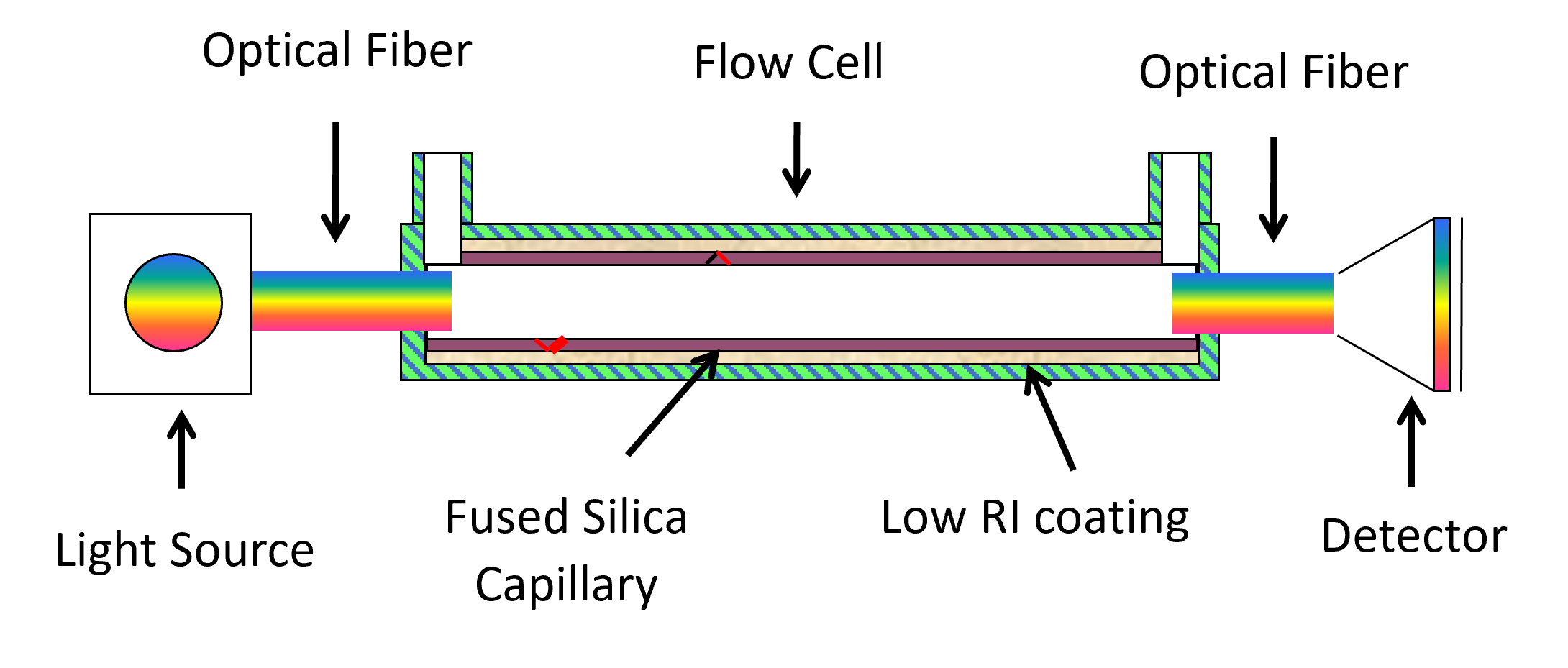
The LWCC uses it's capillary as both a sample compartment and light waveguide. The sample solution is introduced into the LWCC at the liquid input by connecting it to either a pump, chromatography column or filled directly via a syringe. Light is coupled into the LWCC from a light source via a fiber optic cable. After passing through the LWCC, light is collected with an optical fiber and guided to a detector. The concentration of the sample is determined by measuring its absorbance in the LWCC, similar to a standard UV/VIS spectrometer.
Key Features
- Exceptional sensitivity – up to 500-fold improvement over a standard 1 cm cuvette
- Microliter sample volumes
- Measure liquids in a continuous flow or using discrete samples
- Efficient measurement of low-volume or low-concentration (ppb-ppt) aqueous samples
- Low UV drift
- Adapts to most fiber optic detection systems via SMA terminations
- 250 nm – 750 nm wavelength with MilliPore water
Applications
- Absorbance measurement - especially suited for ultra-sensitive absorbance measurements
- Detection of nutrients and trace metals in sea water (including nitrate, nitrite, phosphate, ammonium & iron)
- Environmental and oceanographic monitoring
- Drinking water and waste water analysis (including bromate & chromium)
- Colormetric detection
- Coloured dissolved organic matter (CDOM)
- Atmospheric aerosols (water soluble iron)
- FIA, GFIA, HPLC, Optofluidics
- Stopped-flow
- Dissolution testing
- Process control
LWCC Series
WPI offers three ranges of the LWCC
LWCC-M Series
The LWCC-M series is a MicroLWCC fiber optic, low volume flow cell for UV/VIS/NIR absorbance analysis where the analyte solution funtions as the core of a fluid filled light waveguide. These are ideal in biochemistry, drug discovery, dissolution testing and liquid chromatography (HPLC analysis).
- Low volume flowcell (2.4 µl – 24 µl)
- Small inner diameter 0.55 mm
- Short pathlength (1 cm – 10 cm)
- High pressure up to 60 Bar (870 psi)
- Highest UV transmission of LWCC options
LWCC-3000 Series
The LWCC-300 series is a high sensitivity, microliter sample volume flow cell for UV/VIS/NIR absorbance analysis where the analyte solution funtions as the core of a fluid filled light waveguide. These are ideal in biochemistry, drug discovery, stopped-flow injection, flow-injection analysis, gas segmented continuous flow analysis and water monitoring (environmental, oceanic, and drinking water).
- Low volume for long pathlength (125 µl – 1250 µl)
- Small inner diameter 0.55 mm
- Long pathlength (50 cm – 500 cm)
- Pressure resistant to 6.8 bar (100 psi)
- High transmission
LWCC-5000 Series
The LWCC-5000 series replaces the LWCC-4000 series. This series offers improved baseline stability of aqueous samples over other models due to having a large inner diameter of 1 mm.
- Inner diameter 1 mm
- Wide choice of pathlengths available (5 cm - 200 cm)
- High pressure models offer resistant up to 15 bar (220 psi)
- Great UV transmission
- Easier handling than other LWCC series
- Improved baseline stability of aqueous samples due to large inner diameter




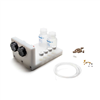
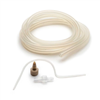
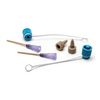



Request
Catalogue
Chat
Print